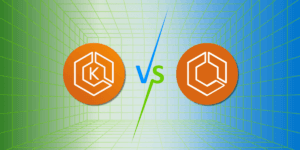AWS EDP (Enterprise Discount Program) is a pricing program offered by Amazon Web Services (AWS) to help organizations save money on their cloud computing costs. It involves significant edp commitment and offers private pricing. It is designed for larger organizations with significant cloud usage, offering discounts based on the organization’s overall spend.
The program is important for organizations as it can help them reduce their cloud expenses and better manage their budget. It also allows organizations to plan for future growth and scale their cloud usage without worrying about unexpected costs, thanks to the provision of private pricing and the assurance of an edp discount.
Understanding AWS EDP
Unlike other AWS discount programs, such as AWS Reserved Instances and AWS Spot Instances, which offer discounts on specific types of instance usage, the EDP program offers discounts on a broader range of AWS services, including compute, storage, database, and networking services.
Additionally, the EDP program is specifically designed for large enterprises and organizations, whereas other AWS incentive plans may be available to all customers, making it an exclusive benefit for enterprise customers. The EDP program also requires customers to commit to a minimum level of usage over a period of time, whereas other programs do not have this requirement.
Key Benefits of AWS EDP
One of the key differences between AWS EDP and other cost reduction programs offered by AWS, such as AWS Savings Plans and Reserved Instances, is that EDP is specifically designed for large ventures. It requires a minimum commitment of $250,000 per year, making it more suitable for organizations with large-scale cloud computing needs. In contrast, AWS Savings Plans and Reserved Instances are available to all customers, regardless of their size or spending level.
Another key difference is that AWS EDP offers a tiered discount structure, with higher discounts being available to customers who commit to higher spending levels. This allows organizations to tailor their discount to their specific needs and usage patterns.
Eligibility and How to Sign Up to
Eligibility:
To sign up for AWS, you must meet the following criteria:
- Be 18 years or older
- Have a valid credit card or bank account
- Have a valid phone number
- Have a valid government-issued ID
- Have a valid email address
- Be located in a country/region where AWS is available
- Have a basic understanding of cloud computing concepts, including AWS cloud spend management.
Step-by-step process for signing up:
- Go to the AWS website (aws.amazon.com) and click on “Create an AWS Account”.
- Enter your email address and create a password.
- Provide your personal information, including your name, address, and phone number.
- Enter your payment information, including your credit card or bank account details.
- Verify your identity by providing a valid government-issued ID.
- Choose a support plan (basic, developer, business, or business).
- Read and accept the AWS Customer Agreement and the AWS Service Terms.
- Click on “Create Account and Continue” to complete the sign-up process.
Role of AWS representatives in the process:
AWS representatives are available to assist and guide you through the sign-up process if needed, ensuring you make informed decisions about your aws spend and cloud cost. They can also provide information about AWS services, pricing, and support plans. However, the sign-up process can be completed independently without the assistance of an AWS representative.
Negotiating Your AWS EDP Agreement
Understanding your AWS usage is crucial before entering into negotiations for an EDP agreement, reflecting both edp discount and spend commitment considerations. This includes having a clear understanding of your current and projected usage of AWS services, as well as any specific requirements or needs your organization may have.
When negotiating a company price discount initiative agreement, there are several strategies that can help you secure more flexible terms and better pricing. These include:
- Volume Commitments: AWS typically offers discounts based on the volume of services you commit to using. Negotiating higher volume commitments can lead to greater discounts and cost savings.
- Long-Term Commitments: AWS also offers discounts for longer-term commitments, such as 1-year or 3-year contracts. If your organization is confident in its long-term usage of AWS services, negotiating a longer contract can result in significant spending reductions.
- Customized Discounts: While AWS has standard discounts for different levels of volume and term commitments, they are often open to negotiating customized discounts based on your specific usage and needs. This can result in more favorable pricing for your organization, potentially including private pricing options.
- Reserved Instances: AWS offers significant discounts for using Reserved Instances (RI) for certain services, which can lead to a lower overall cloud spend. Negotiating for a higher number of RIs can lead to additional expense savings, often through obtaining a better discount rate.
Aside from discounts, there are other benefits that can be negotiated in an EDP contract, including aws support levels and aws bill management features. These can include:
- Support Services: AWS provisions various levels of support depending on the type of agreement. Negotiating for a higher level of support can provide your organization with more comprehensive technical assistance and faster response times.
- Training and Education: AWS also offers training and education programs for its services, available through the AWS Marketplace. Negotiating for access to these programs can help your organization better utilize AWS and maximize its investment.
- Service Credits: In the event of service disruptions or outages, AWS may offer service credits as compensation. Negotiating for a higher amount of service credits can provide your organization with added protection and compensation in the event of any disruptions.
Maximizing Value from AWS EDP
- Monitoring and managing AWS consumption: One of the most crucial aspects of maximizing value from AWS EDP is to continuously monitor and manage your usage. This involves tracking your resources, services, and workloads on AWS, and identifying any inefficiencies or areas where costs can be optimized.
- Utilizing AWS cost management tools for optimization: AWS enterprise supports a variety of cost management tools that can help you optimize your AWS deployment and reduce costs. These tools include AWS Cost Explorer, AWS Budgets, and AWS Trusted Advisor. By utilizing these tools, you can gain insights into your spending patterns and identify opportunities for cost savings.
- Keeping updated on AWS services and pricing models: AWS frequently introduces new services and updates its pricing models, which can impact your overall costs. It is important to stay updated on these changes and assess how they may affect your AWS usage and costs. This will help you make informed decisions about which services to use and how to optimize your usage.
- Leveraging reserved instances and savings plans: AWS packages discounted pricing for long-term commitments through reserved instances and savings plans, significantly impacting your cloud cost management strategy. By committing to a specific usage level for a period of time, you can save significantly on your AWS costs. It is important to regularly review your usage and adjust your reserved instances and savings plans accordingly to ensure maximum financial efficiency, enhance your AWS cloud spend.
- Implementing cost allocation and tagging strategies: By implementing cost allocation and tagging strategies, you can track and allocate costs to specific teams or projects within your organization. This not only helps with budgeting and cost management but also enables you to identify areas where you can optimize costs based on usage patterns.
- Implementing cost-saving best practices: There are several best practices for cost optimization on AWS that you can implement to save money. These include rightsizing your resources, using auto-scaling, optimizing storage, and using spot instances for non-critical workloads.
- Regularly reviewing and optimizing your architecture: As your usage and needs change, it is important to regularly review and boost your AWS architecture to ensure it is cost-effective. This involves identifying any unused or underutilized resources and making adjustments to your infrastructure to optimize costs.
- Partnering with an AWS Managed Service Provider (MSP): An AWS MSP can provide expertise and support in managing and optimizing your AWS operation and costs. They can help you implement best practices, monitor your cloud cost and aws spend, and make recommendations for cost optimization, allowing you to focus on your core business.
- Taking advantage of AWS training and certifications: AWS offers a variety of training and certification programs that can help you gain in-depth knowledge of AWS services and cost management best practices. By investing in training for your IT team, you can increase their skills and expertise in managing and improving your AWS usage and costs.
- Regularly reviewing and renegotiating your AWS Enterprise Discount Program (EDP) agreement: As your AWS application and needs evolve, it is important to regularly review and renegotiate your enterprise commitment agreement with AWS. This can help you ensure that you are getting the best value for your money and taking advantage of any new services or pricing models that may benefit your organization.
Conclusion
The AWS Enterprise Discount Program (EDP) presents a compelling opportunity for large organizations to optimize their cloud computing costs and strategically manage their cloud budget. By participating in the EDP, organizations can benefit from significant discounts tailored to their specific usage patterns and needs, fostering cost predictability and enabling effective budget planning.
The EDP’s tiered discount structure, requiring a minimum commitment, provides flexibility for organizations to scale their cloud usage efficiently while enjoying progressively higher discounts. Moreover, negotiating an EDP agreement involves strategic considerations such as volume commitments, long-term contracts, and customized discounts, allowing organizations to maximize their cost savings and operational efficiency within the AWS ecosystem.
To fully leverage the value of the AWS EDP, organizations should adopt proactive strategies for monitoring and optimizing their AWS consumption, utilizing cost management tools, and staying informed about AWS services and pricing models. Implementing best practices like leveraging reserved instances, implementing cost allocation strategies, and regularly optimizing cloud architecture can further enhance cost efficiency and drive value from the EDP.
In essence, by embracing the AWS EDP and adopting a proactive approach to cloud cost management, organizations can harness the full potential of AWS services while achieving significant spending reduction and optimizing their cloud investment for future growth and scalability.
Don’t miss out on this opportunity to reduce costs, increase efficiency, and scale with confidence. Contact CloudAvocado now on how to get started on your AWS EDP journey.
Let’s build your future in the cloud together.



